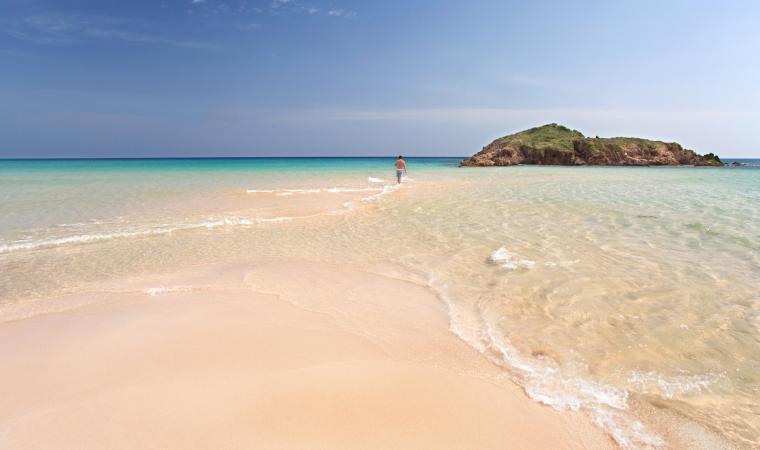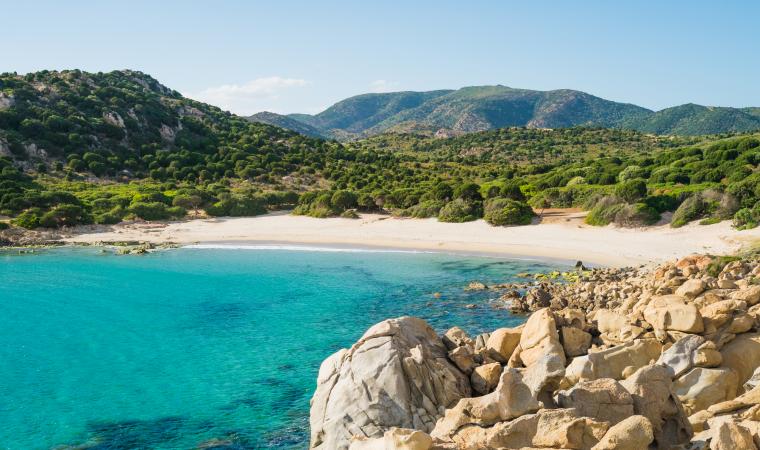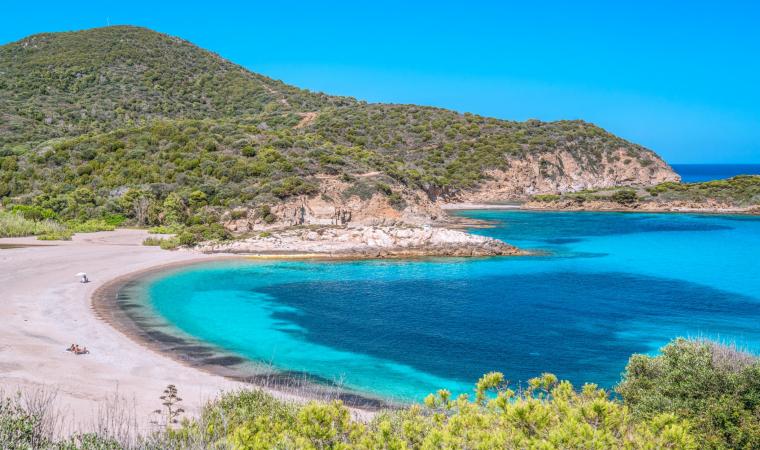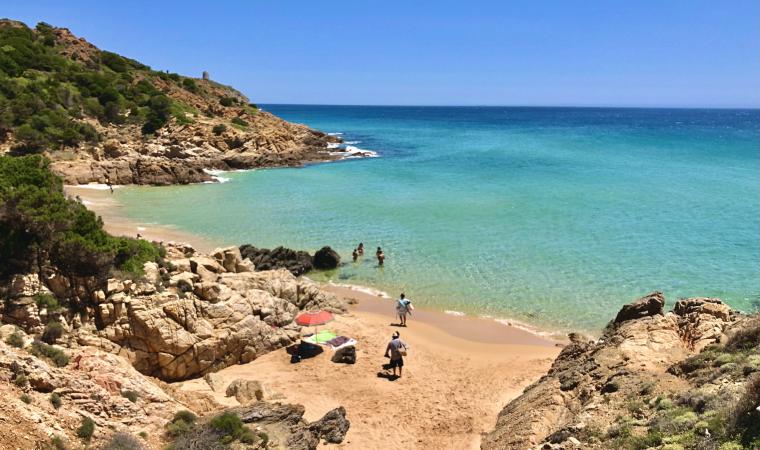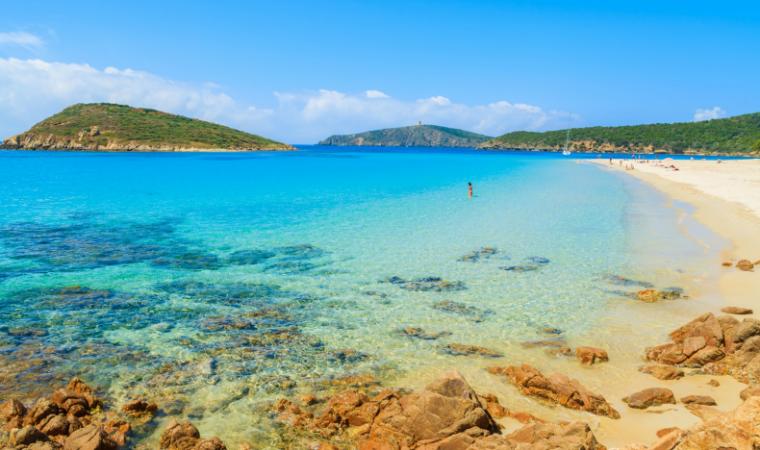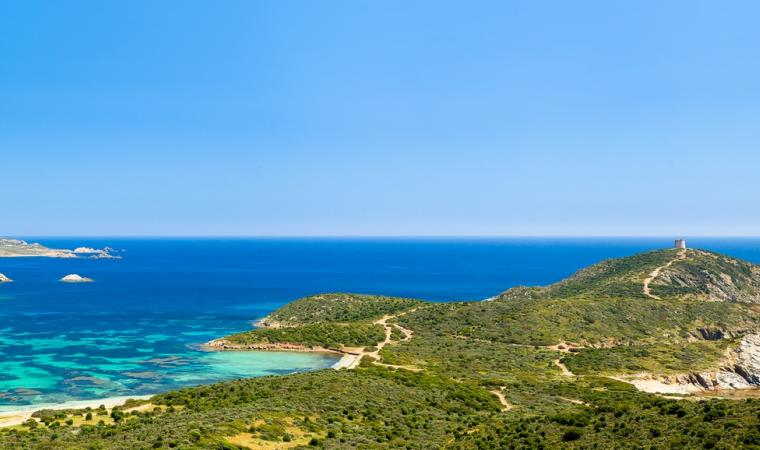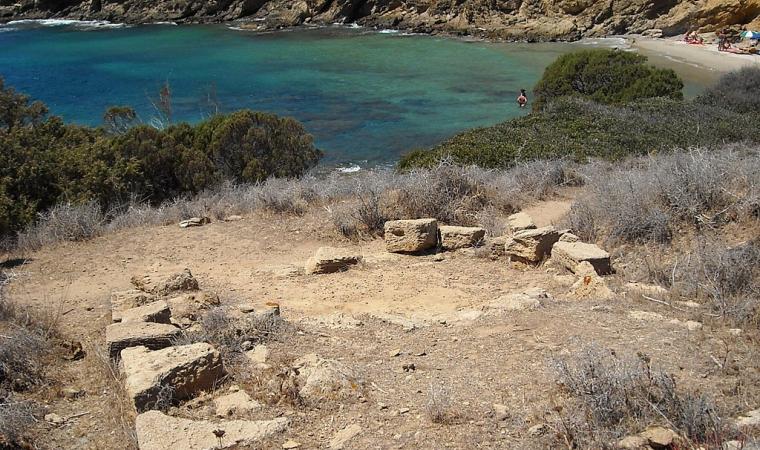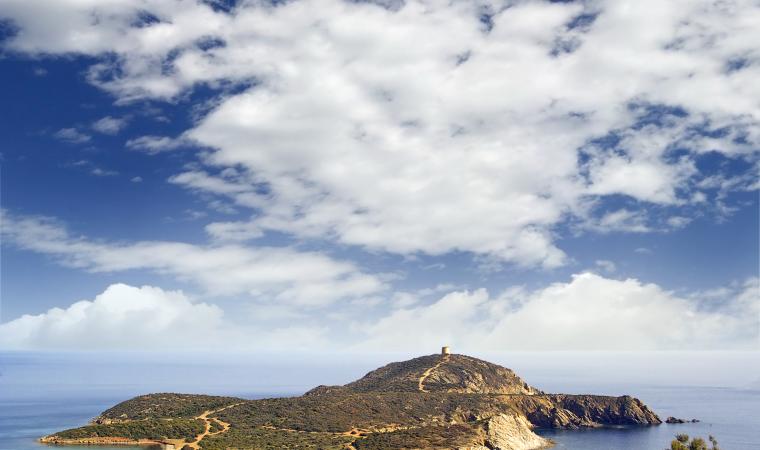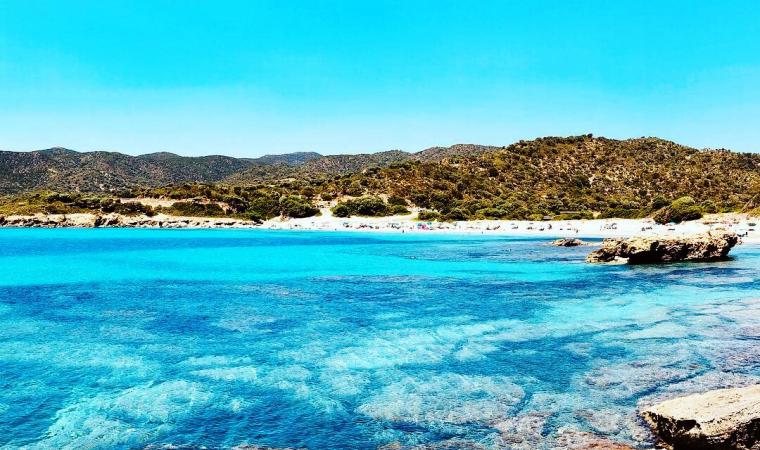Perhaps a little less glamorous than its ‘neighbour’, but equally charming, also because it has all the right elements: a crystal clear sea, golden sand and dunes, breathtaking views and all the comforts you need. S’Acqua Durci is the westward extension of the beach of Su Giudeu. Together, they form Chia’s most famous stretch of coastline and a coastal ‘pearl’ of the Domus de Maria territory. The beach is often turned into a film set or a location for shooting commercials with a strong visual impact. The waters are shallow for several metres and the seabed is sandy, so the beach is suitable for families with children. There is also a refreshment area with the possibility of renting beach umbrellas, sun loungers and boats. Above all, you will be enchanted by the colours of the sea, as they change from turquoise to emerald green, with a few rocks emerging from the water.
The view of the sea is dominated by the islet of Su Giudeu, an 18-metre-high rock, which you can get to by swimming or, during low tide, by ‘walking on the water’. The dunes rising out of the fine, soft sand of the beach sometimes have bushes and shrubs growing on them. Along with those of Su Giudeu and the sandy ’little hills’ that characterise the beach even further east and, not by chance, called Campana Dune, they make up the Spartivento dune formation. Speaking of names, S’Acqua Durci, or ‘fresh water’, is a reference to the system formed by two ponds, connected to each other, extending behind the two beaches. The biggest one,Stangioni de su Sali, occupies the space behind the beach of su Giudeu, while you will find the second one - known as the ‘little pond of Stangioni de su Sali’ - just behind the beach of S’Acqua Durci. The complex is inhabited by various birdlife species, which attract passionate birdwatchers: you will be able to admire red herons, black-winged stilts, western marsh harriers, pink flamingos and Audouin’s gulls. S’Acqua Durci is the second to last beach of Chia along the road running from east to west: a promontory covered in vegetation separates it from the small bay where Cala Cipolla lies. It is an arch-shaped stretch of golden sand set between pink granite reefs extending into the sea, almost forming a natural swimming pool. Here too, you will find shallow, transparent waters, ideal for exploring with a mask and snorkel. Then, to the east, beyond Su Giudeu and Campana Dune, lie Chia’s other beaches: Cala del Morto, cosy, sheltered and also coloured by pink granite rocks; Monte Cogoni, a popular destination for water sports; Sa Colonia, an expanse of white sand close to the Phoenician-Punic remains of the ancient city of Bithia, and Su Portu, ‘watched over’ from above by the tower of Chia, dating back to the 16th century, and from which you can reach the islet of Su Cardulinu, where you will find traces of a Punic temple and a Phoenician tophet.


